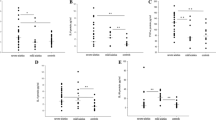Summary
Successful multimodal conservative treatment of sciatic pain will prevent unfavorable results of life discectomy and accelerates the natural course. In assessment of modalities of conservative treatment of sciatic pain, somatic and psychosomatic aspects have to be considered. Severe neurological deficits caused by lumbar disc herniation have to be treated surgically. Conservative treatment of sciatic pain follows the etiopathogenetic hypothesis of a centrally triggered and radicularly terminated inflammation; it reflects the biopsychosocial paradigm. Inflammatory alterations in the disc and psychosocial peculiarities of the patients prove this disease model. Conservative treatment of sciatic pain does not determine its, but works by the combined operation of different but etiopathogenetic or scientifically efficient means. Somatic therapy aims at blocking the inflammatory cascade by peridural and systemic antiphlogistic drugs, sufficently applied analgethics and temporally limited bedrest. Physiotherapy and sports therapy for remobiliziation will follow. Psychosomatic therapy works through relaxation, support and interpretation. Physiotherapy, relaxation and verbal intervention work prophylacally, too. The patient-doctor relationship plays a crucial role in conservative treatment of sciatic pain.
Zusammenfassung
Durch erfolgreiche multimodale konservative Ischialgiebehandlung können unerwünschte Behandlungsergebnisse der Nukleotomie verschmieden werden und der Spontanverlauf beschleunigt werden. Bei der Einschätzung der konservativen Therapiemöglichkeiten müssen somatische wie auch psychosomatische Aspekte berücksichtigt werden. Die konservative Ischialgiebehandlung folgt dem ätiopathogenetischen Ansatz eines zentral gesteuerten und radikulär ablaufenden Entzündungsmechanismus; sie folgt somit dem biopsychosozialen Paradigma. Inflammatorische Veränderungen im Bandscheibenbereich und Besonderheiten des psychosozialen Patientenprofiles belegen dieses Krankheitsmodell. Die konservative Ischialgiebehandlung ist keine inhaltsgebende Einheit, sondern das Zusammenwirken unterschiedlicher ätiopathogenetisch sinnvoller und nachgewiesen effizienter Therapiemodule. Die somatische Therapie zielt zunächst auf die Durchbrechung der Entzündungskaskade durch peridurale und systemische Antiphlogese, auf ausreichend dosierte Analgesie sowie zeitlich limitierte Bettruhe. Remobilisierende und stabilisierende Physio- und Sporttherapie schließen sich an. Die psychosomatische Therapie wirkt angst- und spannungslösend, supportiv und erklärend. Physiotherapie, Entspannung wie auch Gesprächstherapie wirken auch präventiv. Zentrale Bedeutung für die konservative Ischialgiebehandlung übernimmt die Arzt-Patient-Beziehung.
Similar content being viewed by others
Author information
Authors and Affiliations
Rights and permissions
About this article
Cite this article
Schiltenwolf, M. Aspects of conservative sciatic pain. Orthopäde 28, 966–974 (1999). https://doi.org/10.1007/PL00003575
Published:
Issue Date:
DOI: https://doi.org/10.1007/PL00003575




